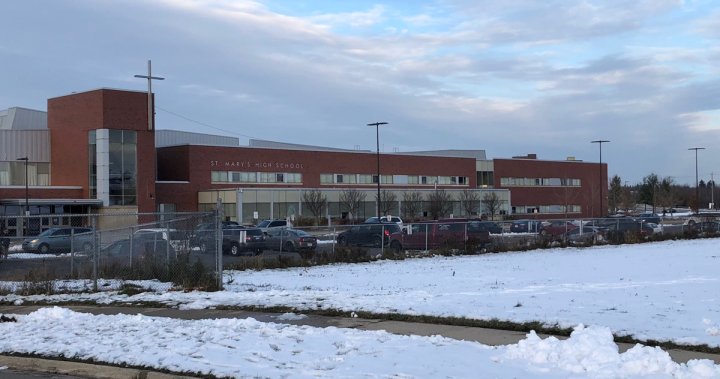The Alberta government said it created a new, multi-pronged approach to wildlife management because of an increase in “problem grizzlies” and growing elk populations.
In a news release on Tuesday afternoon, grizzly and elk populations in Alberta are said to be growing in numbers and their territories are expanding, and so have “negative interactions” with these animals.
The new approach to wildlife management includes creating a new network of wildlife management responders to stop “dangerous and deadly grizzly bear attacks on people and livestock.” Once a “problem animal” like a grizzly or elk is identified, members of the approved network will provide rapid response times across Alberta, according to Tuesday’s release.
This includes tracking and killing a “problem animal” but the government said responders will follow all rules and regulations already in place. The government added that it is not a “bear hunt,” but a measure to ensure the safety of humans and livestock.
“We’ve had a lot of concerns expressed from rural Alberta — from the municipalities and from individuals — across the province about problem wildlife. And we feel it’s the Alberta government’s responsibility to deal with those issues,” Forestry and Parks Minister Todd Loewen told Global News on Tuesday afternoon.
“Both grizzlies and elk are kind of two species that have been causing the most concerns recently. We felt that there was an opportunity to do something … that would help rural Albertans and actually take a little bit of the workload off our official wildlife and conservation resources.”
Loewen added that conservation officers across the province are “very qualified” to deal with issues related to grizzlies and elk, and the decision to kill an animal will be situation-dependent.
Around 20 bears are killed due to “negative human interactions” a year, the minister said, and the program will have a cap of 15 bears killed a year.
“If the wildlife officer and the biologist at the time feel there’s no need to bring somebody in there — maybe it’s a dangerous situation or some other situation where they shouldn’t bring in a wildlife response — they’ll just take care of the issue themselves,” he said.
The email you need for the day’s
top news stories from Canada and around the world.
“It could be putting the bear down. It could be locating the bear. Or it could be just leaving it. But again, those decisions will be made on the ground at the time and using the same metrics that (have already been) written.”
In addition to the responders, the Alberta government said it will continue to fund educational initiatives to prevent human-wildlife conflict. The Community Bear Smart Grant Program received $100,000 in funding to help bear safety educational programs and campaigns. The Waterton Biosphere – Carnivores and Communities program, the Wildlife Aversion Program and the WildSmart Community Program also received funding according to the release but specific numbers were not included.
The Alberta government also said it is restoring important habitats for a range of wildlife and providing the space and food they need, which is already being done in Kananaskis parks and campgrounds.
Loewen said there are about 1,000 to 1,150 grizzly bears in Alberta and the population has been spreading into areas they haven’t traditionally been.
“It’s possible there’s some cost savings, but really it’s about the effective use of time of officers. Sometimes it could take days and days for a problem bear to be located and everything. I think our officers … their time is probably better used for doing other things,” he said.
Sarah Elmelgi, Opposition NDP critic for environment and tourism, said in a statement that the United Conservative government’s new approach will not reduce human-bear conflicts.
“We know from scientific research that the best way to reduce conflict is to work with people to better coexist with grizzly bears,” she said.
“Human use management on the landscape like the livestock compensation program, subsidies for electric fencing, attractant management on public and private land, and better education, are the things that actually reduce conflict. These programs should be amplified across the province to reduce conflict at its source.
“The Grizzly Bear Recovery Plan shows that between 2010 and 2015, 10 grizzly bears were euthanized for management action, but the Minister is scaring Albertans into believing that grizzly attacks are commonplace and that the only way to solve the problem is to kill bears. This is just outright false. Killing bears doesn’t reduce conflict, it reduces populations.”
Kathreen Ruckstuhl, a biologist at the University of Calgary, said she was shocked to hear the news but added that there is no other way of dealing with “problem bears.”
However, she raised concerns that the new wildlife management responder network will open the doors to bear hunting.
“Relocation can be difficult because they’re not being dropped into a vacant spot. There are other bears there … They can be successful, but I don’t know how much they monitor the survival of those bears that are being dropped somewhere else,” Ruckstuhl told Global News.
Ruckstuhl said livestock depredation, or when a bear kills or eats livestock, can happen but is not very common.
“I think typically (wildlife officers) give these bears the benefit of the doubt … But because (grizzlies) are an endangered species, this will kind of be the last resort to kill them. I think all other steps should be taken before that,” she said.
“The main issue is that these populations are declining … Most of the mortality in grizzly bears seem to be human-caused. It could be railways, could be cars, could be hunting-related.
“It’s a species with a very slow life history … Because they’re so slow (to reproduce) and long-lived, those potential mortality risks are really much more important than a species that has a very fast life history and has lots of young. So it was designated as a threatened species.”
© 2024 Global News, a division of Corus Entertainment Inc.




